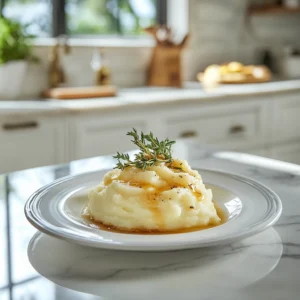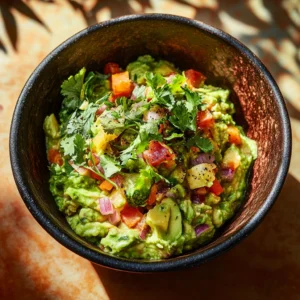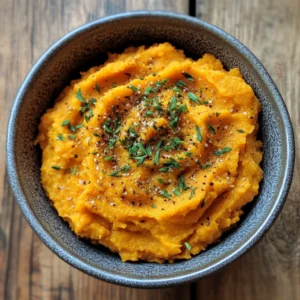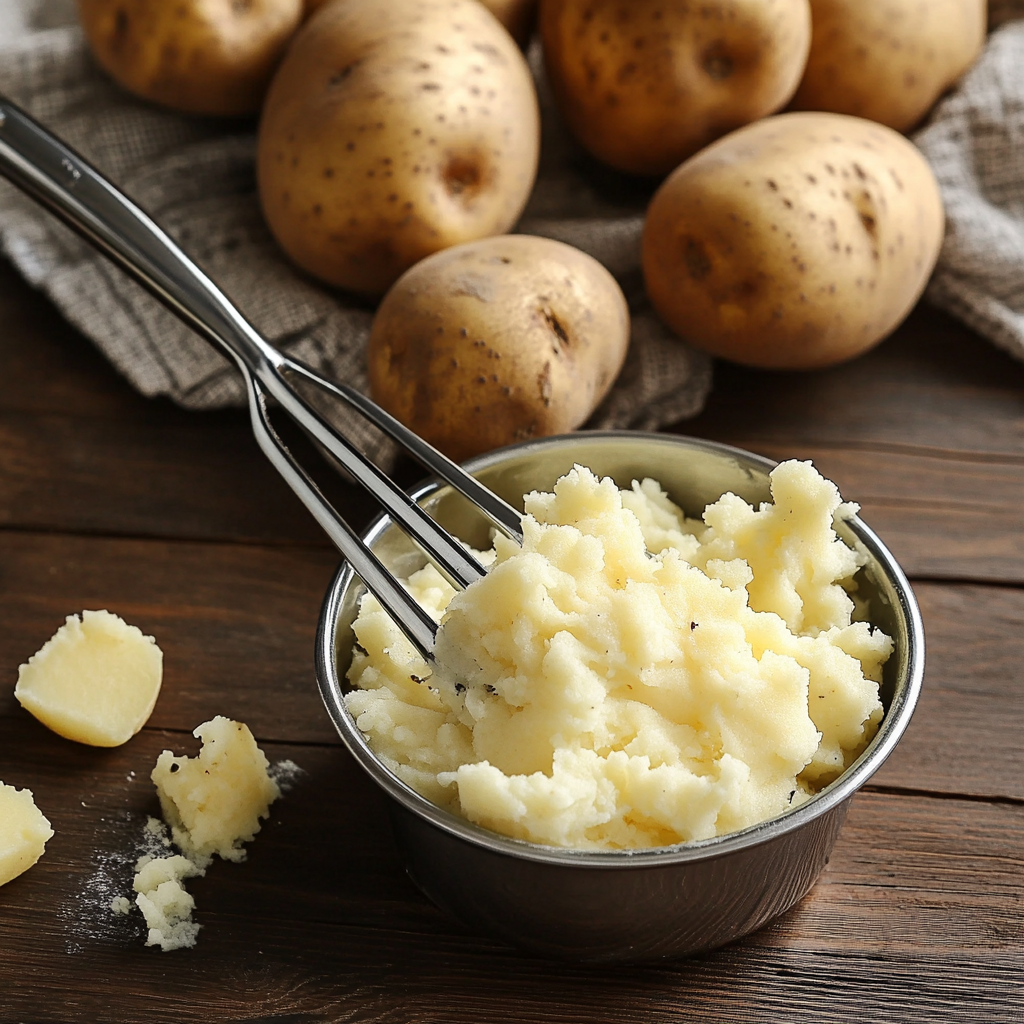Discover everything you need to know about this indispensable kitchen utensil that has stood the test of time. In this comprehensive guide, we explore the history, design, and versatility of the potato masher, from its humble beginnings to its modern incarnations, and provide practical tips on usage, maintenance, and an array of delicious recipes where this culinary tool plays a starring role.
Introduction
The potato masher is much more than a simple kitchen gadget. It represents the evolution of culinary techniques—from primitive wooden tools to modern, ergonomically designed models that promise both efficiency and ease. Essential for achieving the perfect texture in mashed potatoes, it also excels in creating a variety of dishes, from creamy sauces to innovative vegetable mashes.
- Why It Matters:
- Enhances the texture and consistency of mashed dishes.
- Serves as a reliable tool in both home and professional kitchens.
- Offers versatility for mashing vegetables, fruits, and even creating sauces.
In today’s fast-paced cooking environment, a reliable potato masher is indispensable. For additional inspiration on innovative kitchen techniques, check out Innovative Kitchen Tools and Recipes. You might also enjoy The Ultimate Guide to French Toast Recipe to expand your culinary repertoire.
A Brief History of the Potato Masher
The evolution of the potato masher reflects its crucial role in culinary history. Initially, simple wooden or stone tools were used to mash ingredients. Over time, these rudimentary instruments evolved into the sophisticated devices we use today.
Early Beginnings:
- Simple, multipurpose tools were used in ancient kitchens to mash ingredients by hand.
- Early methods relied on basic mashing techniques to create rudimentary purées and porridges.
Modern Evolution:
- Design Milestones:
- The introduction of materials such as stainless steel, plastic, and silicone greatly improved durability and hygiene.
- Ergonomic enhancements have minimized hand fatigue, making prolonged use much more comfortable.
Cultural Impact:
The potato masher has been featured in historical cookbooks and is seen as a symbol of the transition from traditional to modern culinary practices.
For those interested in exploring broader culinary techniques, consider reading Expert Cooking Techniques or our article on The Ultimate Guide to Cottage Cheese Benefits.
Design, Materials, and Types of Potato Mashers
The performance of a potato masher is largely determined by its design and construction materials. Choosing the right one can significantly impact your cooking experience.
Key Design Elements:
- Traditional Round Mashers: Ideal for creating a smooth and uniform texture.
- Tine or Cross-Hatch Designs: Provide a chunkier mash with enhanced texture and grip.
- Modern models incorporate ergonomic handles designed for comfort and ease of use.
Materials Matter:
- Stainless Steel: Durable, rust-resistant, and easy to clean.
- Plastic: Lightweight and budget-friendly.
- Silicone: Perfect for non-stick cookware and offers a secure, comfortable grip.
Types of Mashers:
- Manual vs. Electric: Manual mashers offer complete control over texture, while electric mashers provide speed and convenience when preparing larger quantities.
- Versatility: Though primarily designed for mashing potatoes, these tools can also be used to create guacamole, blend sauces, or even prepare salsas.
For more tips on optimizing your kitchen tools, visit our guide on How to Use a Potato Masher Effectively.
Recipes Showcasing the Potato Masher
The potato masher is a versatile tool that enhances a wide range of recipes. Below are several creative dishes where this tool is essential, along with step-by-step instructions to guide you through the process.
Recipe 1: Classic Recipe

Creamed Spinach
Equipment
- Skillet
- Colander
Ingredients
- 1 package frozen spinach approx. 10 oz
- 2 tbsp butter
- 2 cloves garlic minced
- 1 cup heavy cream or substitute half-and-half for a lighter version
- nutmeg a pinch
- salt and pepper to taste
Instructions
- Thaw the spinach in a colander, then squeeze out as much water as possible.
- In a large skillet, melt the butter over medium heat.
- Add the minced garlic and sauté until fragrant (about 1 minute).
- Stir in the spinach and cook for 2-3 minutes.
- Pour in the heavy cream and add a pinch of nutmeg. Stir to combine.
- Simmer on low heat for an additional 5 minutes until the mixture thickens slightly.
- Season with salt and pepper to taste.
Notes
Recipe 2: Creamy Guacamole

Ingredients:
- 3 ripe avocados
- Juice of 1 lime
- 1 small red onion, finely chopped
- 1 tomato, diced
- 1 clove garlic, minced
- Salt and pepper
- (Optional) Fresh cilantro
Preparation:
- Step 1: Halve the avocados and remove the pits. Scoop the flesh into a bowl.
- Step 2: Use your potato masher to gently mash the avocado until it reaches a creamy consistency, leaving a few chunks for texture.
- Step 3: Stir in the chopped red onion, tomato, garlic, and lime juice.
- Step 4: Season with salt, pepper, and cilantro if desired.
- Tip: The potato masher is perfect for achieving the right balance of smoothness and chunkiness in your guacamole.
Recipe 3: Sweet Potato and Carrot Mash

Ingredients:
- 500 g sweet potatoes
- 300 g carrots
- 50 g butter
- 100 ml heavy cream
- Salt, pepper, and a dash of cinnamon
Preparation:
- Step 1: Peel and cut the sweet potatoes and carrots into even chunks.
- Step 2: Steam or boil the vegetables until soft (about 20–25 minutes).
- Step 3: Drain well and transfer the vegetables to a large mixing bowl.
- Step 4: Add the butter and heavy cream, then use your potato masher to blend until smooth and creamy.
- Step 5: Season with salt, pepper, and a dash of cinnamon.
- Tip: This colorful and nutritious mash makes a great side dish for holiday meals.
Recipe 4: Loaded Mashed Potato Casserole
Ingredients:
- 1.5 kg potatoes, peeled and cubed
- 150 g sour cream
- 100 g cream cheese
- 100 g shredded cheddar cheese
- 100 g cooked bacon, crumbled
- 2 green onions, thinly sliced
- Salt and pepper
Preparation:
- Step 1: Boil the cubed potatoes in salted water until very tender (about 25 minutes).
- Step 2: Drain the potatoes and return them to the pot.
- Step 3: Mix in the sour cream and cream cheese, then mash using the potato masher until well blended.
- Step 4: Stir in the shredded cheddar, bacon, and green onions. Season with salt and pepper to taste.
- Step 5: Transfer the mixture to a casserole dish, sprinkle a little extra cheese on top, and bake at 180°C (350°F) for 20 minutes until bubbly and golden.
- Tip: This casserole can be served as a hearty side or a main dish during cooler months.
Recipe 5: Spicy Black Bean Mash
Ingredients:
- 400 g canned black beans, drained and rinsed
- 1 small red bell pepper, diced
- 1 small jalapeño, seeded and finely chopped
- 1 clove garlic, minced
- Juice of 1 lime
- 2 tbsp olive oil
- Salt and pepper
- Fresh cilantro for garnish
Preparation:
- Step 1: In a medium bowl, combine the black beans, red bell pepper, jalapeño, garlic, and olive oil.
- Step 2: Use the potato masher to gently mash the beans, leaving some whole for texture.
- Step 3: Stir in the lime juice and season with salt and pepper.
- Step 4: Garnish with fresh cilantro and serve as a dip or a side dish with tortilla chips.
- Tip: Adjust the spice level by adding more or less jalapeño, depending on your taste.
For more creative recipes and innovative twists on classic dishes, you might enjoy exploring Delicious Stuffed Zucchini Recipes or our guide on Air Fryer Grilled Cheese.
How to Use a Potato Masher Effectively
Mastering the use of your potato masher is key to achieving the perfect consistency in your dishes. Here are some practical tips:
- Preparation:
- Ensure your potatoes or vegetables are cooked until tender.
- Drain them thoroughly to avoid a watery mash.
- Mashing Technique:
- Use gentle, circular motions to break down the ingredients evenly.
- Gradually add liquids such as milk or cream to control the texture.
- Common Pitfalls:
- Over-mashing can lead to a gluey consistency.
- Always season your mash to enhance its flavor.
For more detailed techniques, revisit our internal guide on How to Use a Potato Masher Effectively.
Maintenance and Cleaning
Proper care ensures your potato masher remains in optimal condition for years of culinary creativity.
- After Each Use:
- Rinse immediately with warm water.
- Clean with a mild detergent and a non-abrasive sponge.
- Deep Cleaning:
- Occasionally soak in warm, soapy water to remove any stubborn residues.
- For stainless steel models, dry promptly to prevent rust.
- Storage:
- Store in a dry, well-ventilated area.
- Consider hanging it or placing it in a designated utensil drawer to avoid damage.
For additional kitchen care tips, you might explore our article on How to Sharpen a Knife: A Comprehensive Guide.
Buying Guide: Choosing the Right Potato Masher
Selecting the perfect potato masher can elevate your cooking experience. Consider these guidelines when making your decision:
- Features to Consider:
- Handle Design:
- Look for an ergonomic, non-slip handle that ensures comfort during prolonged use.
- Material Quality:
- Decide between options like stainless steel, plastic, or silicone based on durability and ease of cleaning.
- Weight and Balance:
- A well-balanced masher minimizes fatigue and improves overall control.
- Handle Design:
- Budget Considerations:
- Economical Options:
- Plastic models are often more affordable and work well for occasional use.
- Premium Models:
- High-quality stainless steel or silicone versions offer superior performance and longevity.
- Economical Options:
- Where to Buy:
- Check reputable kitchen supply stores and online platforms with reliable customer reviews.
For further comparisons of kitchen appliances, take a look at The Difference Between Slow Cooker and Crockpot.
Conclusion
The potato masher is a timeless culinary tool that continues to play a vital role in kitchens around the world. From its humble beginnings to its modern incarnations, it remains a symbol of culinary ingenuity and versatility.
- Key Takeaways:
- Historical Significance:
- A rich heritage that informs modern cooking techniques.
- Design & Material Benefits:
- Ergonomic designs and durable materials enhance the overall user experience.
- Versatile Usage:
- Whether you’re preparing classic mashed potatoes, creamy guacamole, or innovative vegetable mashes, the potato masher is indispensable in achieving the desired texture and flavor.
- Historical Significance:
Embrace the art of mashing to elevate your recipes and transform everyday dishes into extraordinary culinary experiences. Happy mashing!

